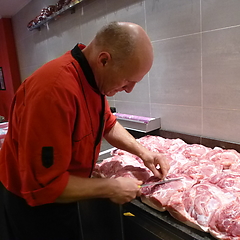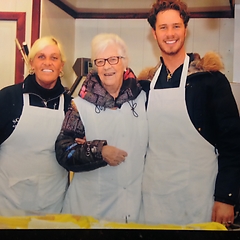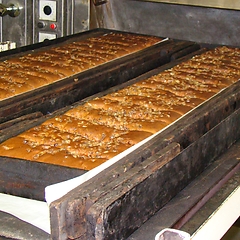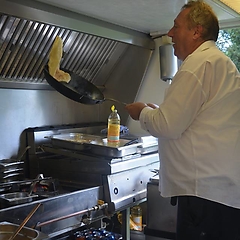Croquettes are culinary pearls: rich and deep in taste and they have their own texture experience through the crispy crust. Making croquettes by hand in the Netherlands is an old tradition, traditional craftsmanship, as we learned from our grandmothers, grandfathers, mothers and fathers who used to make the most delicious croquettes at home. Or this artisanal handicraft was done by confectioners and butchers who made their own recipes as a quality product. Making croquettes yourself is laborious and requires knowledge that is in danger of being lost, which is why fewer and fewer people can do it. As a result, the croquette has become a factory product that must be produced as massively and cheaply as possible, and as a result the croquette loses the glorious culinary status it once had and deserves, because the croquette is so much more than a snack item. Hand-produced croquettes have a different quality than factory-produced croquettes because the quality controls, the production principles and quality requirements for the ingredients used (eg no artificial additives, browning agents or 'crust batters') differ.
The Dutch croquette differs from, for example, the Spanish (more bechamel than salpicon), Italian (based on rice) and Japanese and Indonesian (potato base). What do we mean by a handmade croquette 'Dutch style'? 1) It is made on a small scale on a cooking stove where the production process is hand stirred, as well as the roll of the croquette is done by hand. 2) The base of the salpicon is butter and flour cooked in a pan, after which self-drawn stock is added and then the other hand-cut seasonings (meat / fish / vegetables). The choice of added ingredients is primarily determined by quality and not by being as cheap as possible for profit maximization. After stiffening, the croquette is rolled by hand and passed through breadcrumbs and egg white. A small group of cooking enthusiasts who have the time and knowledge still make croquettes at home by hand. Although many croquettes are eaten by Dutch people, these are almost all factory croquettes that are intended as snack items and do not get a culinary place in a meal. In addition, as far as known, there are six small-scale producers in the Netherlands where croquettes are made entirely by hand and on a small scale (in accordance with the above definition) and offer them as a traditional culinary product (Wilde Kroketten in Amsterdam, Krokettenloket in The Hague, Krokettenboutique in Utrecht, Air Cafe in Cadzand, Krokettenhemel in Eindhoven and Prinsen in Nieuw Weerdinge.) Johannes van Dam and his testpanel, as well as Edwin Kats et al. have written down and passed on the specialist knowledge of two specialized cookbooks.
The croquette was invented in France. It all started at the court of Louis XIV (1638-1715), who according to culinary journalist Wina Born should not have become king but cook. In addition to women, his great love was for cooking: “He liked to be in the palace kitchen and while traveling, he prepared his own meals in country inns. He was able to larvae meat, cook a delicious pot-au-feu, and knew a hundred ways to prepare eggs and made delicious jams”, she writes. His interest in the art of cooking probably contributed to the major breakthrough of 'new cooking' in French cuisine of the seventeenth century. His Spanish wife also contributed to this because her Spanish chefs introduced the roux in France, the mixture of butter and more or less brown fried flour to bind soups and sauces. In his famous cookbook Le cuisinier royal et bourgeois, the chef François Massialot incorporated this roux into a variety of recipes, including his first recipe for the croquet, which was an intermediate dish in the form of an egg. The word croquet comes from the French croquer, which means to nibble. Via Belgium and the international nobility, eating and making croquettes entered the Netherlands. First of all again as a culinary dish that eventually trickled through to the lower classes via the wealthy bourgeoisie and the craftsmen such as butchers and confectioners. It was popular in folk cuisine because it was possible to make a nutritious product from residual waste (eg pulled soup meat or dried cheese) with flour and butter. </p> <p> In the fifties and sixties it became increasingly prosperous and the continuing industrialization and technology a factory product. The vending machines and snack bars were introduced and making croquettes yourself was considered unnecessarily laborious. The handicrafts were marginalized in this area.



